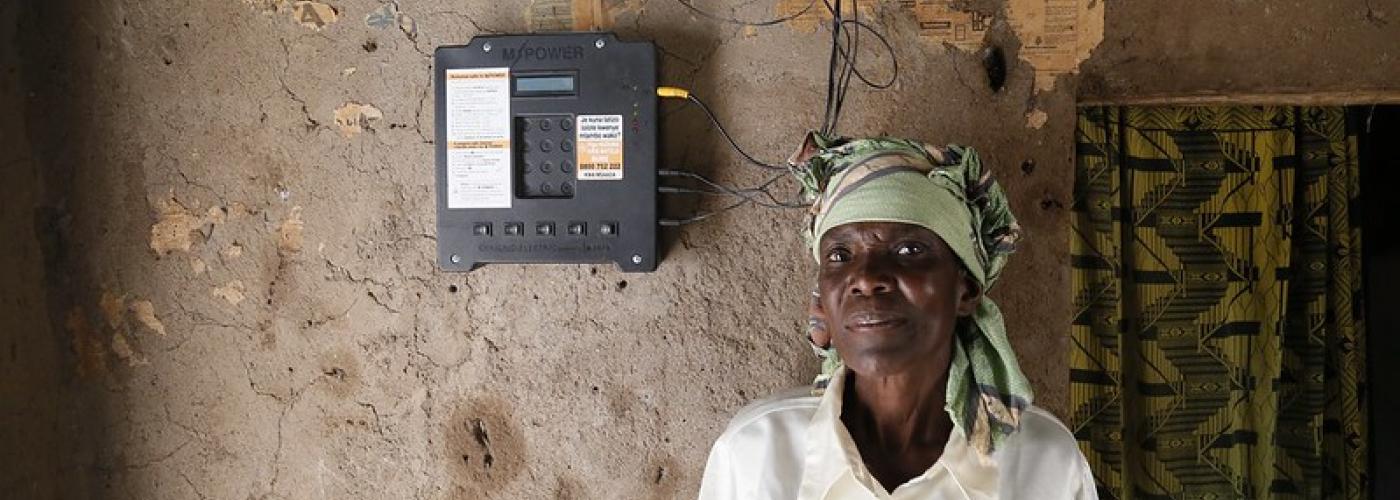Power Banks: How Commercial Bank Lending is Catalyzing Off-Grid Household Electrification in Rwanda
Image

In many developing countries, the companies that build, supply, and sell clean energy solutions have difficulty obtaining bank loans or other financing to expand their businesses or reach new markets. This was the case in Rwanda until Power Africa, through USAID, at the demand from financial institutions and providers of solar PV solutions, took action to educate, connect, and support commercial lending programs for off-grid electricity.
In Rwanda, only one-third of the population has access to reliable electricity. In rural areas, less than a quarter have a place to plug in. The Government of Rwanda has an ambitious goal to electrify 100 percent of the country by 2024.
Since 1994, household electricity access rates have increased in Rwanda. Solar home systems and solar minigrids have been an important part of this success, but off-grid energy companies have continued to experience commercial bank reluctance to finance expansion and startups.
Bringing Local Commercial Banks to the Table for Off-Grid Energy Lending
Power Africa—a U.S. Government-led partnership coordinated by USAID— provided funding for technical assistance to increase the willingness and ability of commercial banks to lend in local currency to off-grid energy companies in Rwanda. Power Africa selected the Climate Economic Analysis for Development, Investment, and Resilience (CEADIR) Activity, supported by the USAID Global Climate Change Office, as its partner. CEADIR worked with domestic commercial banks and SMEs in three ways:
Identifying local commercial banks with serious interests in providing clean energy loans and providing them with training and technical assistance.
- CEADIR initially focused on two local commercial banks in Rwanda. One of these local banks had previously received a USAID Development Credit Authority partial guarantee for off-grid energy and small business loans. After demonstrating the strong interest of the first two banks, CEADIR expanded the training to nine additional bank companies. It trained a total of 252 staff from the 11 banks.
Training local bank credit and business teams to understand clean energy technologies, markets, business models, and loan products with a particular focus on off-grid markets.
- In the training sessions and workshops, some bank staff expressed concerns about lending to international off-grid companies that financed pay-as-you-go (pay-go) sales of solar home systems, primarily for rural households. Rural households typically rely on farming for their earned income and bank staff perceived farmers to be high-risk clients. The ability of off-grid pay-go companies to monitor and shut down home solar systems remotely if their customers failed to make their expected payments only partially alleviated the concerns of the local commercial bank staff.
Supporting the banks in issuing loans to off-grid solar PV providers and potential SME customers.
- CEADIR, with the help of a local business advisory service provider screened approximately 50 potential debt transactions, including solar PV providers and their potential customers. Potential loans for solar PV solutions range from $33,000 to $3.3 million. Between October 2017 and March 2020, one of these borrowers received a $59,000 loan for a 40 kilowatts peak (kWp) solar installation and conversations between potential borrowers and lenders continue.
Power Africa’s engagement on local commercial lending to off-grid energy providers is part of its support to the Government of Rwanda’s Rural Electrification Strategy. Through its Beyond the Grid sub-initiative, Power Africa also supports the roll-out of solar home systems and mini-grids through transaction advisory services, contributes to a multi-donor program to accelerate access to electricity for bottom-of-the-pyramid households, and tracks growth of the off-grid solar market through an innovative database and verification mechanism.
However, reaching Rwanda’s goal of 100 percent electrification by 2024 will require significant public-private collaboration. Through the experiences outlined above, Power Africa recognized that there may be other local commercial lending channels that would match local commercial lender's risk appetite to participate in the solar PV market.
This blog was originally published by Climatelinks.
This is the first of a three-part series on the transformational role of commercial banks in promoting clean energy in Rwanda. This blog focuses on photovoltaic (PV) systems for households beyond the power grid. The second blog addresses PV systems for commercial and industrial (C&I) users and suppliers. The third blog discusses how C&I solar power development can have broader impacts on job creation, small- and medium- enterprises (SMEs), and bank lending for clean energy.
Raouf Saidi, a Clean Energy Finance Expert with Crown Agents USA, contributed to this blog.


